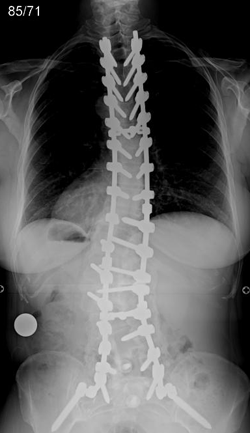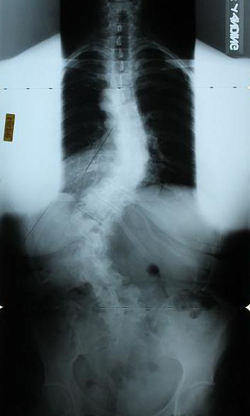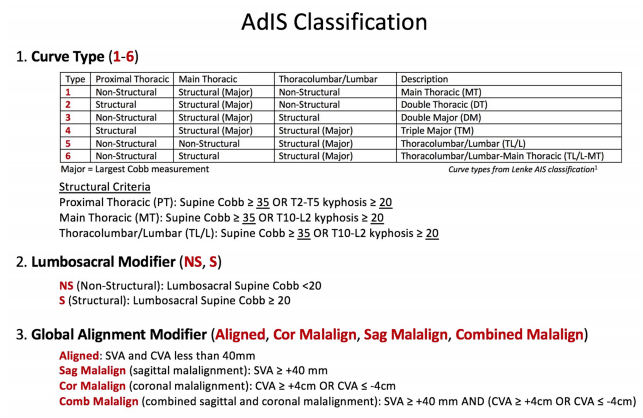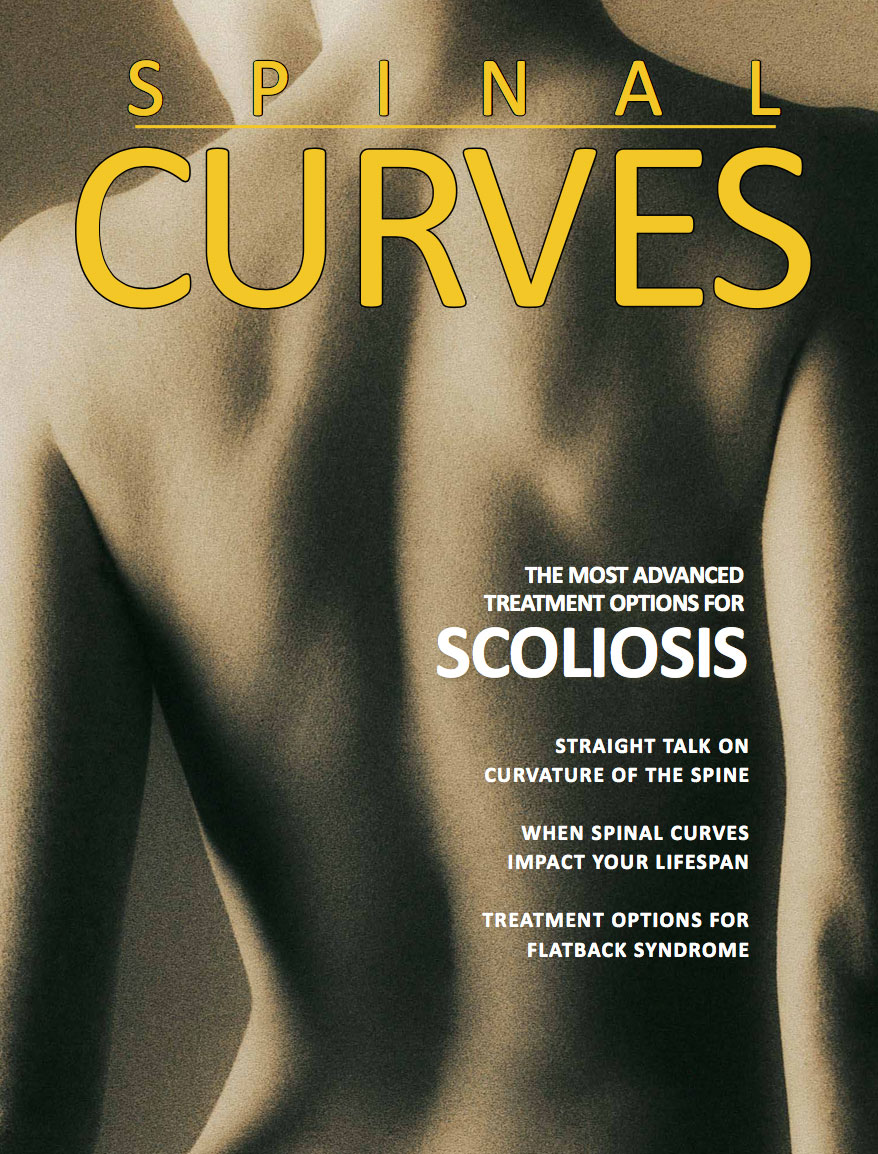Adult scoliosis can be simply the progression of idiopathic or any other cause of scoliosis causing worsening pain and deformity.


In de-novo degenerative spinal deformity patients often present with loss of lumbar lordosis and mild to moderate sagittal plane imbalance. Coronal plane deformity is typically mild. However, progressive back pain from the degeneration or buttock and leg pains from lumbar spinal stenosis (nerve pinching from bone spurs) may drive a patient to seek treatment.
Patients with pre-existing adolescent idiopathic scoliosis may degenerate either the scoliosis or the spine around the scoliosis because of the normal spinal compressive forces being transmitted through tipped or curved vertebrae and discs. Patients may present with coronal (shifted) or sagittal plane (stooped) deformity. Patients who have developed significant lumbar spinal stenosis (bone spurs pinching nerves) may demonstrate neurologic deficits related to nerve root compression. Or a collapsing spine syndrome may be present with progressive pain and spinal imbalance.
Again, non-operative treatments in adult patients are primary, with osteoporosis treatment, physical therapy and if necessary, injections. If these fail, and either the scoliosis or the disability associated with it progresses, surgery may be necessary.

Case Study
Adult Scoliosis
Marcia was diagnosed with scoliosis when she was eight years old and it's difficult for her to remember life without it. She has always been a very resilient person and scoliosis didn't stop her from being active and enjoying life. Marcia loves playing the violin - so much so that she teaches children how to play. Even as her curvature worsened she still found happiness in hiking, traveling, line dancing with her husband and yoga for relaxation. She even wore a lift in her shoe to level her pelvis as her scoliosis worsened so she could keep going.
Click here to learn more.







